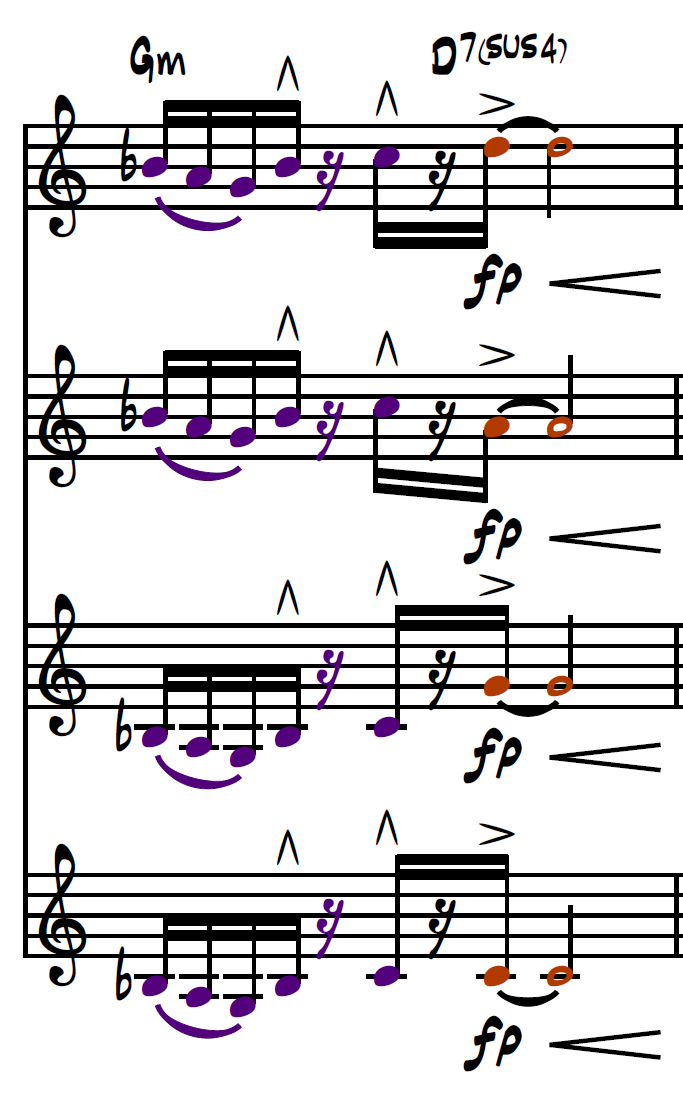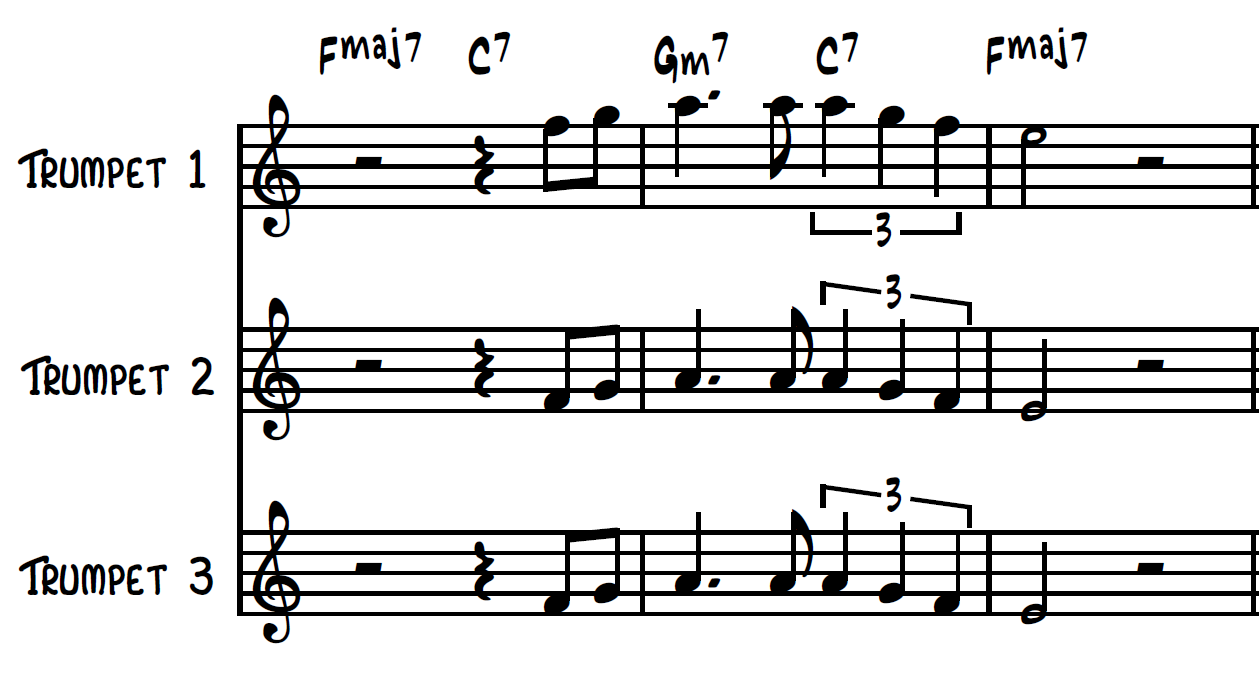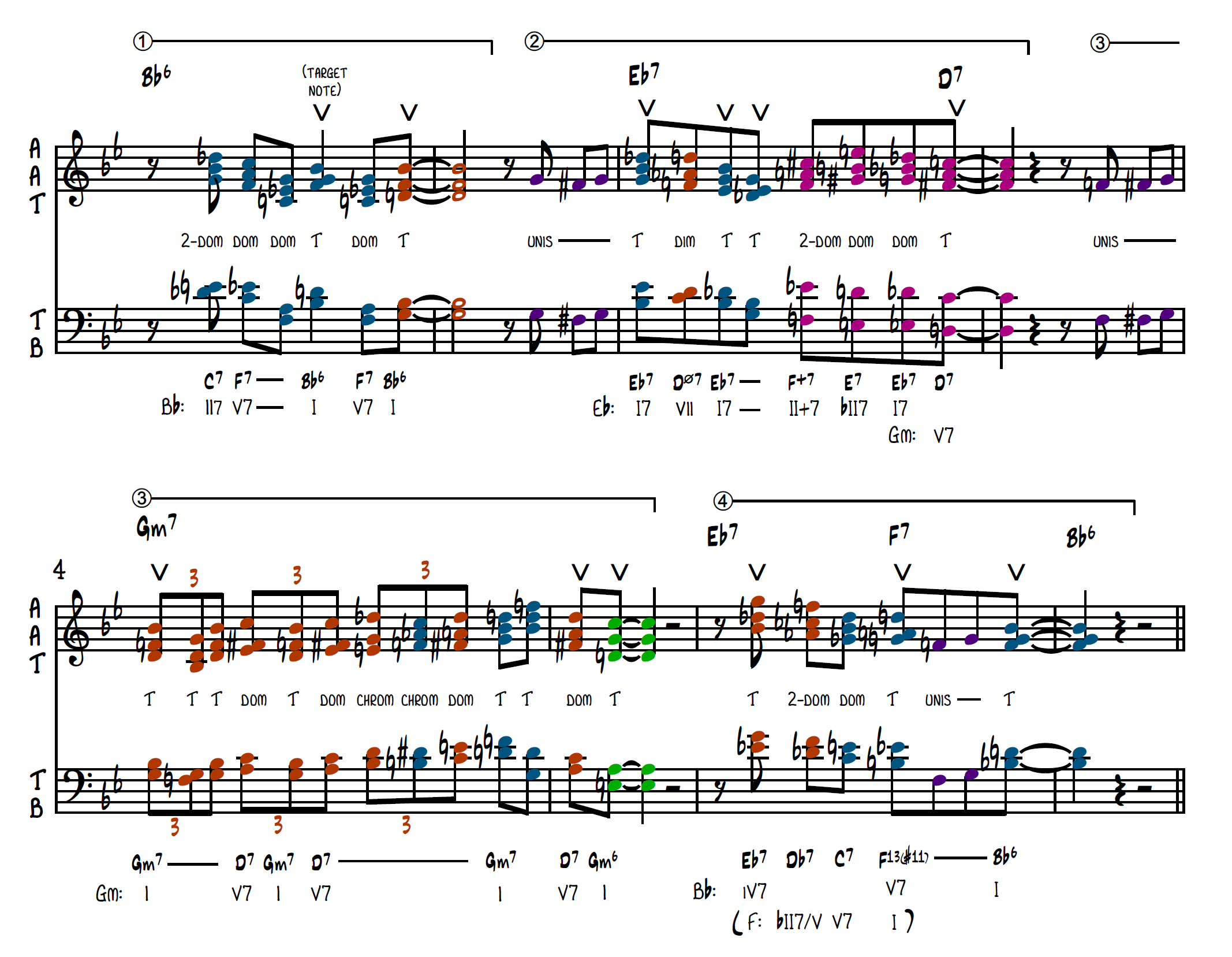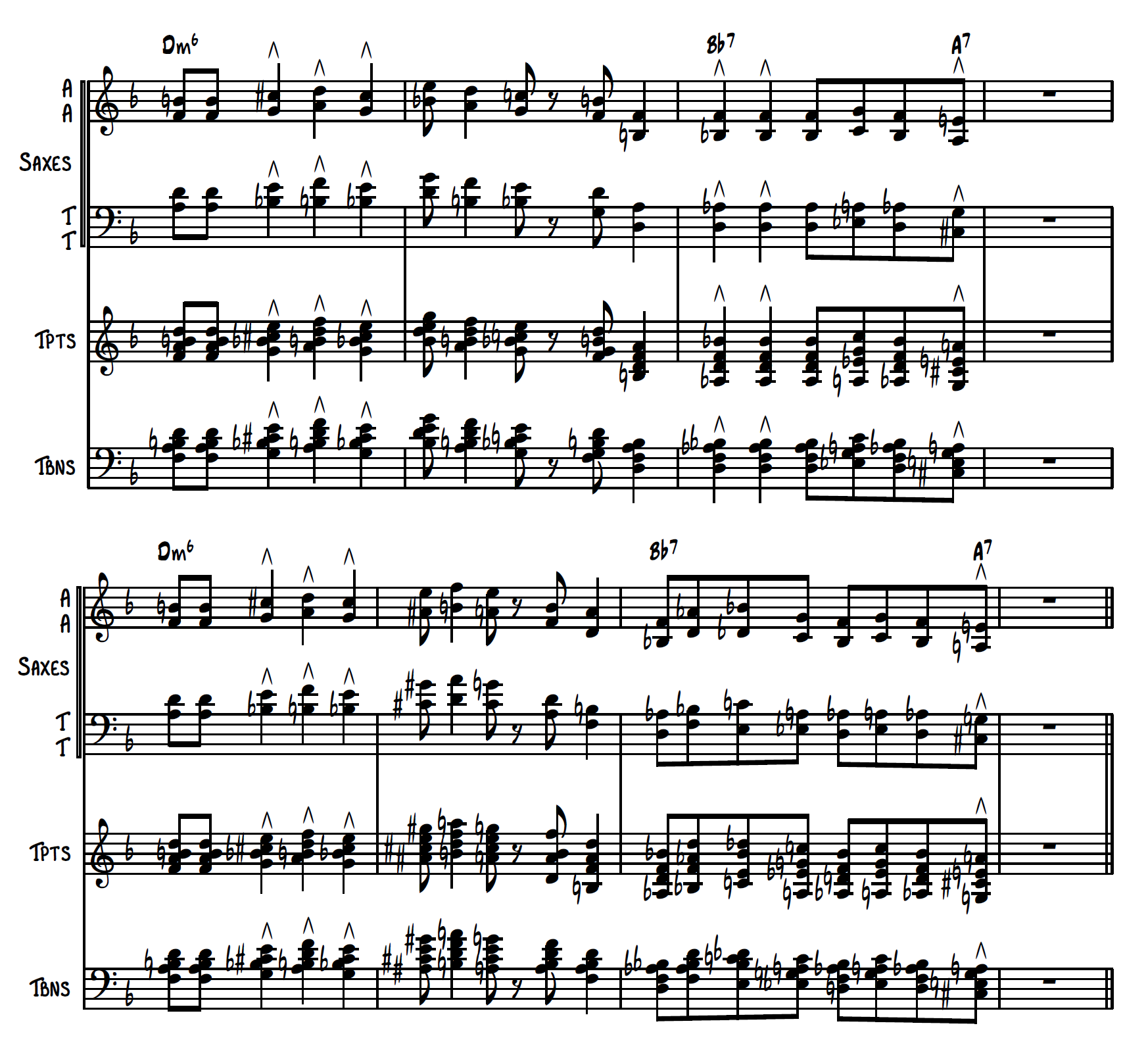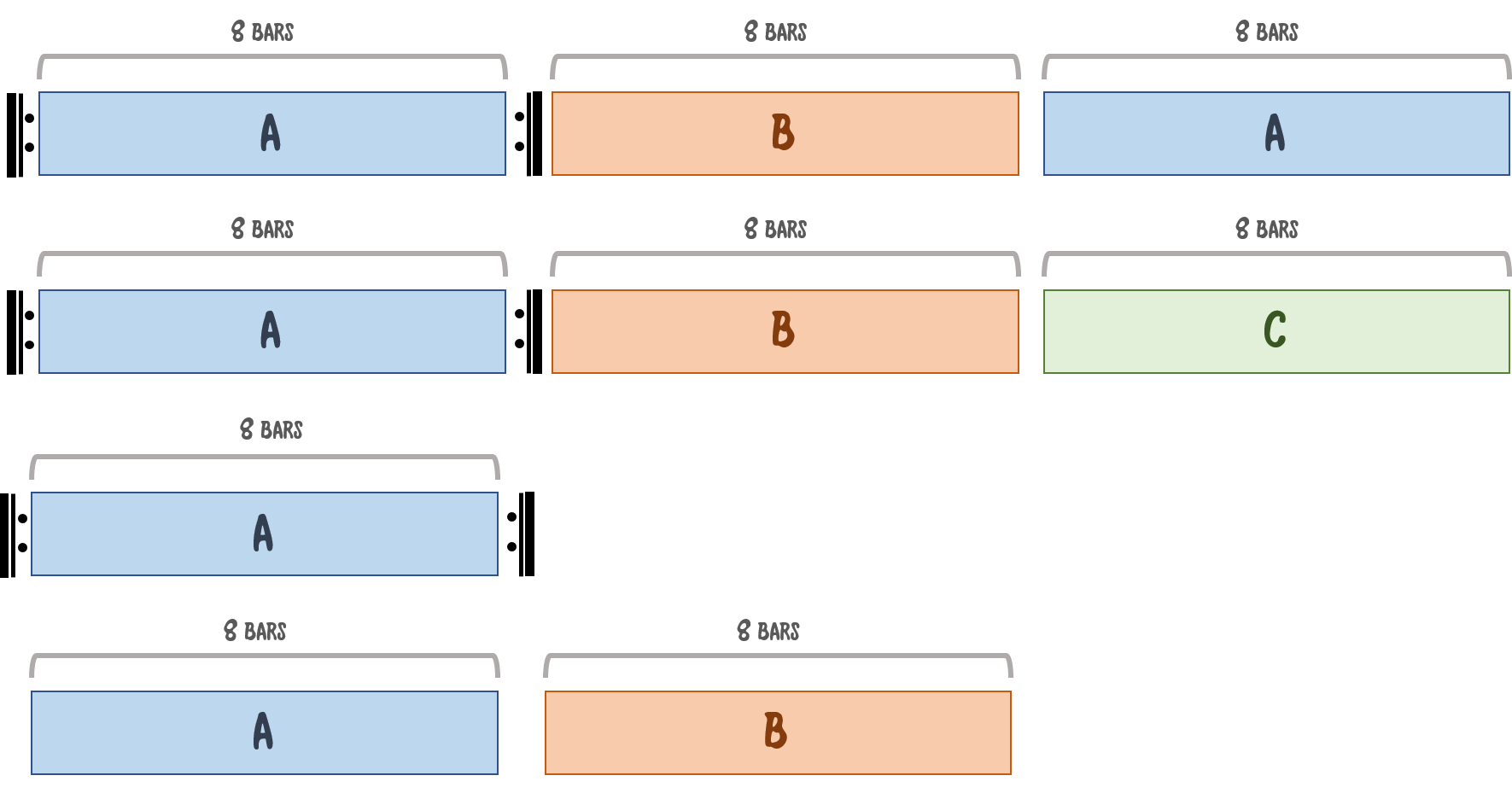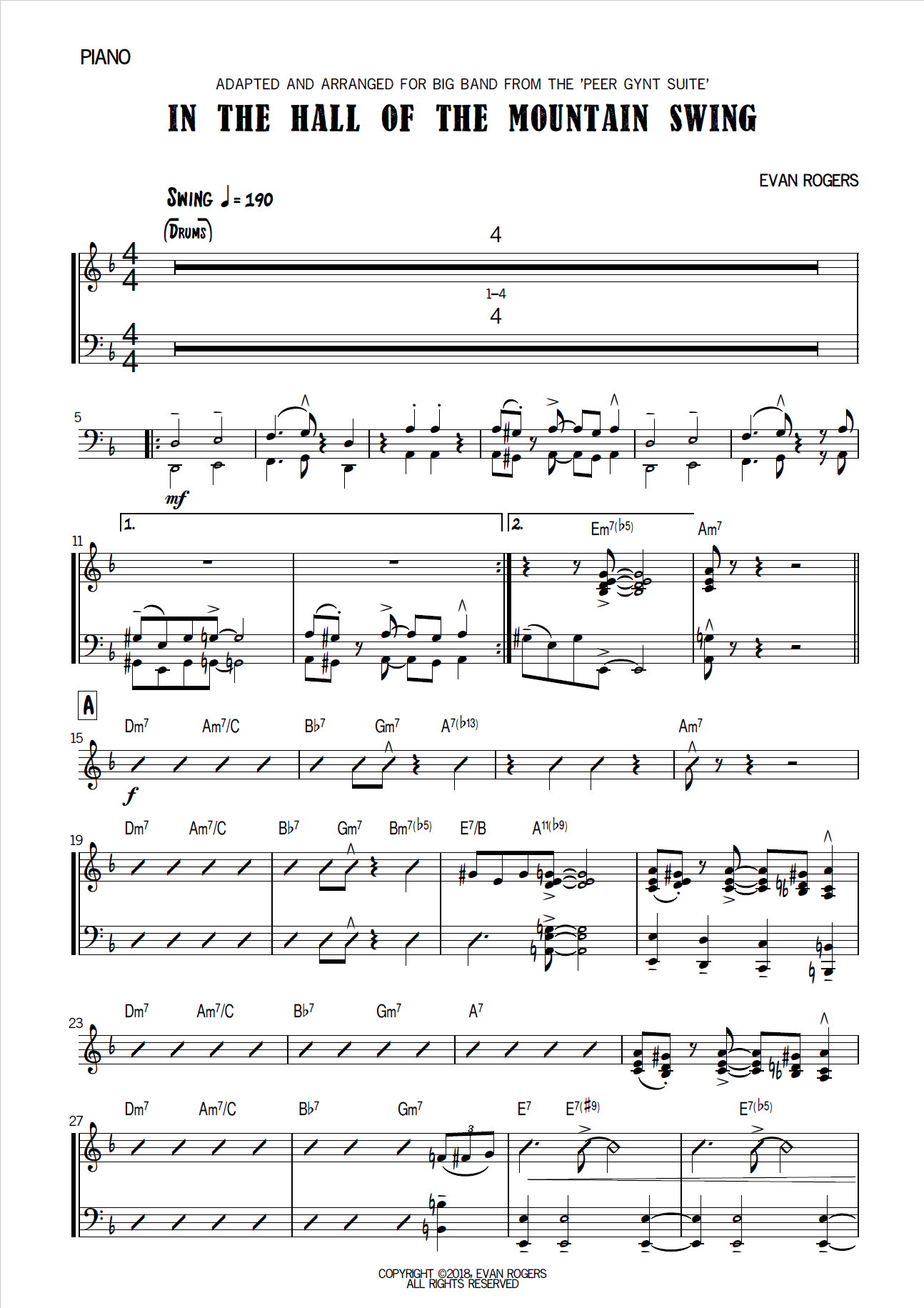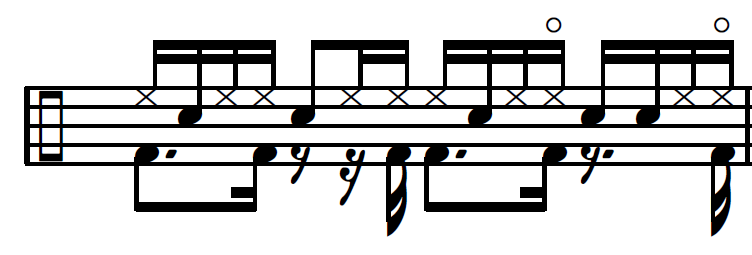How do I arrange for big band? How much theory do I need to know? Where do I even start? Where am I? Why am I naked? Answers to (most) of these questions and more…
Read MoreIf you booked a big band, who would you expect to turn up and play? We look at the instruments in a big band as well as their roles and responsibilities.
Read MoreA look into speciifc aspects of each instrument in a big band. We look at their ranges and tone colours as well as looking at effective, idiomatic writing for each player.
Read MoreHow many instruments can we convince one musician to play? We look at common doublings in big band writing and some of the reasons why we might use these extra colours.
Read MoreWhy would using an orchestral score layout look so wrong when applied to a big band? What’s the difference? We also have a brief look at good big band part preparation.
Read MoreThe big band offers a huge array of great brass colours. We get the option of so many different mutes, how do we know as arrangers when to use each one and how they affect the player?
Read MoreWhat's the biggest tell-tale sign of a non-jazz musician arranging jazz? It has something to do with those little markings and symbols that we like to litter our scores with.
Read MoreBad phrasing in a big band arrangement is the number one reason for wasted time (and money) in the studio. Luckily, it’s easy to get right when you know what to look for.
Read MoreHaving a working knowledge of jazz harmony is vital to the big band arranger. I’ve tried to cover everything you’d need to know in just one article.
Read MoreWith the basics of jazz harmony covered, it’s time to start looking into how we can apply it. The way we arrange the notes in a chord is known as voicing and is integral to all aspects of jazz.
Read MoreWith the basic voicings down, let’s have a look at some more niche approaches to voicing chords. These can be used in a variety of arrangement contexts.
Read MoreThe most straightforward and most often overlooked way of arranging for big band is by using unisons and octaves. Sometimes, having a few players back up a single line is the way to go.
Read MoreThe soli is the heart of the big band arrangement. It would be rare to find a chart without one. Learning how to write a soli is a must for any big band arranger.
Read MoreWe’ve looked at how to score a melody and write a soli. But how do we score thick, lush background chords and textures for big band?
Read MoreA shout chorus is traditionally the pinnacle of the big band chart and uses all the techniques covered so far. Let’s look at a step-by-step method for writing a shout chorus.
Read MoreImprovised solos are a vital part of not only big band charts, but jazz as a whole. You could argue it defines the entire style. Let’s look at how to arrange effective improvised solo sections.
Read MoreThe rhythm section hasn’t been given much love so far. In the next two articles we’ll break down effective rhythm section writing, starting with Guitar and Piano.
Read MoreWe continue our look into writing effectively for the rhythm section as we focus on the backbone of the whole band - the Bass and Drums.
Read MoreForm and structure in any style of music are incredibly important and that remains the case in big band charts. We look at the usual forms and structures for this kind of music.
Read MoreTo wrap up everything, I’m going to show my method for analysing a big band chart in a meaningful way. With this, you can kind of reverse-engineer it to help with the writing process.
Read More










